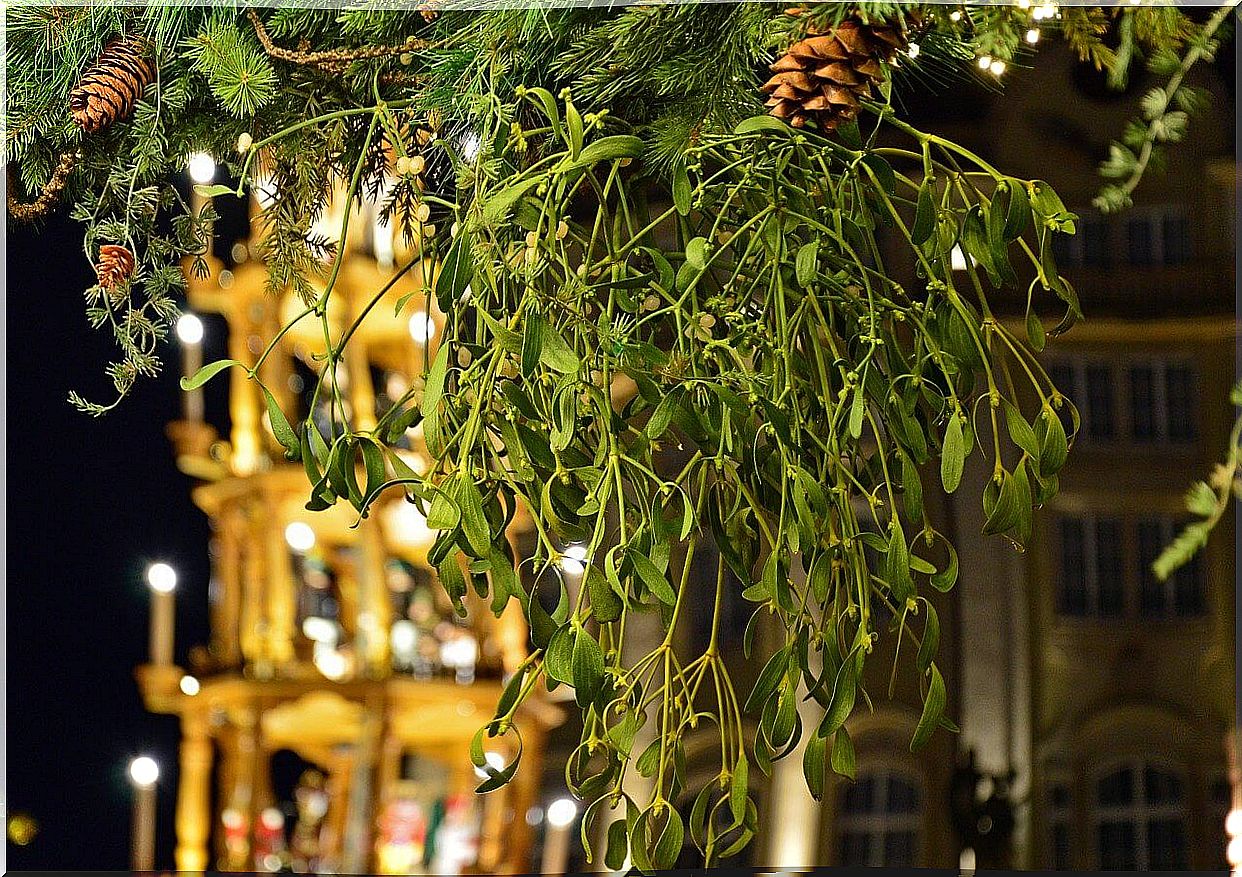12 Curiosities About Christmas
Christmas is a time full of symbolisms and traditions whose meanings or origins are ignored by many people. That is why we compiled some facts and curiosities about Christmas that perhaps you did not know.
Have you ever wondered why we decorate a pine tree or why we usually give gifts at this time of year? What is the history of Saint Nicholas? Next we will respond to these and other curiosities about Christmas.
1. The word “Christmas”
Christmas comes from the Latin nativitas which means ‘birth’. It refers to the celebration of the birth of Jesus Christ, symbolically dated December 25. Other languages of Latin origin, such as Italian, Portuguese and Catalan also borrow from this term to name this date of the year: natale , natal or nadal .
For its part, the Anglo-Saxon language uses the term Christmas which means ‘Mass of Christ’. While in Germany the celebration is called weihnachten which means ‘night of blessing’.
2. Origin of the Christmas tree
The origin of the Christmas tree is said to date back to the time when Christians came to evangelize northern Europe. They realized that around December 26 the inhabitants of these lands celebrated the birth of the sun god and fertility by decorating an ash tree, which represented the universe. They called it yggdrasil .
After evangelization, the converted inhabitants incorporated the image of the tree in the celebration of the birth of Christ, but changing its meaning. It is speculated that Saint Boniface (in the early 700s) brought about this change by cutting down the yggdrasil tree with an ax and planting a pine tree in its place.
The choice of this tree was not random, as it was made with the intention that it would be perennial, as a symbol of God’s love. In addition, it was adorned with apples representing original sin and with candles as a symbol of the light of Christ. However, it took more than a millennium for the custom to become popular. Did you know this curiosity about Christmas?

3. The first Christmas trees
The tradition of placing and decorating trees at Christmas time became popular in the mid-18th century, being a very common custom in upper-class German families. Its decorations consisted of attaching candles to the branches using melted wax or needles.
4. Why give gifts at Christmas?
One of the curiosities about Christmas arises from confusion, since it is common to think that the custom of giving gifts is an invention to promote shopping and consumerism at this time. However, this tradition dates back many centuries and three possible origins have been identified:
- Pagan celebrations: in Ancient Rome, between December 17 and 24, they used to pay tribute to the god of grain and agriculture. This celebration was known as saturnalia and it was customary to exchange gifts as a symbol and wish of good fortune for the next harvest.
- Saint Nicholas of Bari : in the 4th century and in Asia Minor, a boy named Nicholas is orphaned and inherits a fortune. Then he became a priest and used to give gifts to the poor and homeless. This saint served as inspiration to create the famous Santa Claus .
- Biblical origin : according to the Bible, three wise men traveled to Nazareth to deliver offerings (incense, gold and myrrh) to the child Jesus, the new king of the Jews. It is thought that from this story the idea of giving gifts at Christmas originated.
5. Origin of Santa Claus
As already mentioned, the well-known Santa Claus is a representation of Saint Nicholas of Bari, a priest who entrusted himself to help and save the lives of the poor and homeless. But its current image was created by the Coca-Cola ® company in 1931.
Although the priest has been portrayed throughout history as an older adult with a long beard and mustaches, it was the Coca-Cola ® company painter who created a more human portrait of Saint Nicholas, dressing him in red and white with glasses. and rosy cheeks.
6. Why is Christmas celebrated on December 25?
On December 25 the birth of Jesus Christ is celebrated, but the exact date of this event is really unknown. Some calculations based on the Bible indicate that he could have been born between September and October, while others claim that it could have been January 6.
This curiosity about Christmas stems from the fact that the Catholic Church chose December 25 to facilitate the evangelization of pagan Roman peoples, who paid tribute to other gods with the arrival of the winter solstice. This decision also prevented the Christian faithful from participating in these celebrations.
7. The first manger
The manger as a representation of the birth of Jesus was created in 1223, in an Italian town called Greccio, by Saint Francis of Assisi. The idea came from the desire to want to celebrate a special Christmas. To do this, he asked some villagers to play the characters of the birth.
Then he summoned the people to the place where he represented the nativity scene and held a mass there. Everyone was surprised and delighted. From that moment, churches and homes around the world began to replicate the manger with wooden statuettes.
8. The meaning of the colors of Christmas
The traditional colors of the festivities are one of the curiosities about Christmas. These typical shades are red, green and gold.
The color red is said to signify divine love and the blood that Christ shed for humanity. Green represents life, nature, hope and happiness. While gold indicates wealth, prosperity and divine enlightenment.
9. The most famous Christmas song
The most listened to Christmas carol is Silent Night, of Austrian origin. The lyrics were written by a pastor named Joseph Mohren in 1816, and the melody was composed by organist Franz Xaver Gruber in 1818.
This topic was translated into various languages and dialects. For its part, UNESCO declared it Intangible Heritage of Humanity in 2011.
10. Why kiss under the mistletoe?
The mistletoe is a symbol and one of the curiosities about Christmas very popular in countries of northern Europe and the United States. Especially for the belief of kissing another person under said plant on Christmas Eve. This custom dates back to the Scandinavians, who believed that it was a source of peace.
From the 18th century they took on a more romantic hue and it was thought that young women should be kissed under the mistletoe, thus marking the beginning of a prosperous and passionate love. Today this act is interpreted as a call to luck and love for couples.

11. The first tree decorated with electric lights
The first Christmas tree decorated with electric lights was made in December 1882. The inventor was Edward H. Johnson, who decorated his own tree with an array of 80 small blue, white and red light bulbs.
At the beginning of 1900 some stores already had this ornament, however, most of the people could not buy it, due to its high prices. So the use of candles to decorate the Christmas tree remained until 1930.
12. Origin of Christmas stockings
The last of the curiosities about Christmas refers to a popular story that gives an account of the origin of the stockings that are hung in the fireplace. The story goes back to Saint Nicholas and tells that a nobleman of the Middle Ages is widowed and ruined, so he cannot pay the dowry for the marriage of his three daughters.
Saint Nicholas of Bari finds out about this fact, so one night he drops gold coins down the chimney. These fell into the girls’ socks, the ones that were hanging in the fireplace. Thanks to this gift, the women were able to pay their dowry and get married.









